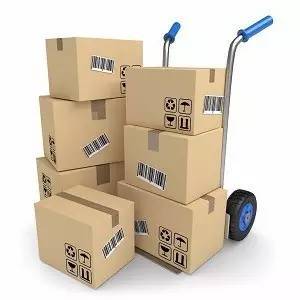Toy industry personnel must know 10 quality indicators
The toy industry quality work will be exposed to many indicators every day, but you really know the indicators hanging on your mouth every day, and know why? Do a survey before explaining to see if you understand the definition, purpose, calculation formula and the terminology involved in the following concepts.
First, the scrap rate

  
definition:
This percentage is calculated by dividing the cost of scrap material by the total production cost or by dividing the total scrap quantity by the total production quantity of the product.
purpose:
Used as a result measure to determine if the process is normalized for part production and assembly.
formula:
Scrap rate % = (material amount of waste / total production cost) × 100% or (total amount of waste / total production quantity of the product) × 100%.
the term:
Amount of waste materials: the value of the materials used in the waste.
Total production cost: the sum of labor, materials and factory burden (water, electricity, etc.).
Application/Information: The waste calculation is obtained directly from the financial system of the unit. If the company's financial system cannot separate the value of waste materials from labor and burdens, it should be coordinated with relevant departments as soon as possible.
Second, the rework rate

definition:
The proportion of time spent on rework activities is divided by the number of rework hours divided by the total number of production labor hours or rework (rework) divided by the total production quantity.
Purpose: Used as a result measure to emphasize those operational stations that need improvement in the first quality.
formula:
Rework rate % = (rework time / total production labor hours) × 100% or (rework (rework) total quantity / total production quantity) × 100%.
the term:
Rework time: refers to the time it takes to reprocess, sort, and repair the parts that will become scrap. These times can be used on work in progress, finished products and purchased parts or materials. Rework time includes such things as repair, repackaging, re-sorting, additional inspection activities and containment. Rework time includes internal or external activities. It should include direct time plus the direct time portion of overtime.
Production Labor Hours: The sum of working hours of direct/production laborers (including direct time plus the direct time portion of overtime).
Application/information: Occasional inspections of direct workers should not be considered rework. Any product that re-enters the production process should be considered reworked. Part of the total labor content of the production line should be considered as rework. This part will be determined based on the product status of the rework. For example, at the final inspection, 10% of the paint production line is unqualified, and the paint production line has 20 operators. The reworked product (10%) needs to be painted again, and the paint production line has 10% of the total working time. It is considered to be used for rework. 10% × 20 people × 8 hours = 16 rework hours.
Third, the product inspection pass rate

definition:
The number of qualified products in the warehouse inspection is divided by the total quantity of the inbound inspection.
purpose:
Used as a process metric to measure the quality level of the entire production process.
formula:
Product warehousing inspection pass rate%=(product ware inspection qualified quantity/in total warehousing inspection quantity)×100%.
4. The number of unqualified products in parts per million (customer return rate or product defect rate)

definition:
The number of returned/rejected customers or the number of unqualified products per million products accounted for the ratio of all shipments or total production.
purpose:
Used as a result measure to fully show the impact of product dissatisfaction, so that focus on solving problems.
formula:
Customer return rate = number of returned items / number of shipments Total number of products * 1,000,000 or product defect rate = total number of unqualified products / total number of products * 1,000,000.
5. Quality accidents
definition:
The number of production pauses due to product failure each year. Causes the company to stop shipping, stop production or require modifications to the manufactured product.
purpose:
Used as a measure of overall results, responding to product dissatisfaction caused by the number of company quality incidents, in order to focus on solving problems.
formula:
Quality Accident = The number of factory production pauses caused by a company-defined quality incident each year.
6. Poor processing rate of parts (inspection pass rate or process pass rate)
definition:
The inspection pass rate or process qualification rate is the number of qualified parts in the part production process divided by the total number of parts produced or the weighted average; the part processing failure rate is the total number of parts unqualified divided by the quantity of parts produced.
purpose:
Used as a process metric to determine the quality level of a production process.
formula:
Inspection pass rate or process pass rate = (one-time qualified quantity / total part production quantity) × 100%
Poor parts processing rate = (number of parts failed / number of parts produced) × 1,000,000.
Seven, customer inspection once pass rate

definition:
Refers to the quantity delivered, the quantity received by the customer inspection at one time divided by the total quantity delivered.
purpose:
Used as a result measure to measure the quality level of the finished product.
formula:
The customer inspection rate of one pass% = (the number of qualified products received by the customer inspection / the total number of products delivered) × 100%.
Eight, the inspection rate of incoming materials (one pass inspection rate of incoming materials)

definition:
Within a certain period of time, the amount of incoming inspection is divided by the quantity of incoming inspection.
purpose:
Used as a result measure to monitor supplier supply quality levels.
formula:
Feed inspection pass rate % = (incoming quantity of incoming inspection / total quantity of incoming inspection) × 100%.
Nine, quality costs

definition:
Simply defined as the cost of failure (loss) over a certain period of time.
purpose:
Used as a result measure to reflect the overall results of the company's quality management system operational effectiveness.
formula:
Quality cost = internal failure (loss) cost + external failure (loss) cost;
Internal failure (loss) cost = scrap loss + rework or repair loss;
External failure (loss) cost = customer return loss fee + product liability fee + complaint fee;
Quality cost as a percentage of sales = (quality cost / sales) × 100%.
the term:
Internal failure (loss) cost: The loss caused by the product cannot meet the quality requirements before delivery;
External failure (loss) cost: The loss caused by the product cannot meet the quality requirements after delivery;
Scrap damage fee: the cost of scrapping due to the failure of the finished product, semi-finished product, work in progress to meet the quality requirements and the inability to repair or economically not worth repairing;
Rework or repair loss: The fee paid to repair a nonconforming product to meet quality requirements or expected use requirements;
Customer return loss fee: the cost of scrap loss returned by the customer;
Product liability fee: the cost of compensation for damage caused by product quality failure;
Complaint Fee: The cost of repairing or replacing a product that has a quality problem with the customer.
X. Batch failure rate

Definition: refers to the proportion of the number of batches of the entire inspection lot that need to be reworked (or repaired or scrapped) in the entire inspection lot in all the inspection lots within a certain period of time.
Purpose: Used as a result measure to monitor the overall quality level of the process.
formula:
Batch failure rate = number of unqualified batches / total number of inspection lots * 100%.
Inspection lot: It is a batch of products submitted for inspection, and it is also a batch of products that are collected as inspection objects. Usually, the inspection lot should be composed of the same type, the same grade and the same type (size, characteristics, composition, etc.), and the production conditions and production time are basically the same unit product.
Production batch: refers to a certain number of products that are put into production as determined by the production plan.
Source: Network
China Sink Tidy Dispenser,New Sink Tidy Dispenser,Steel Sink Tidy Dispenser
Fucheng Metals Production Co., Ltd. of Jiangmen City , https://www.fcmp.com